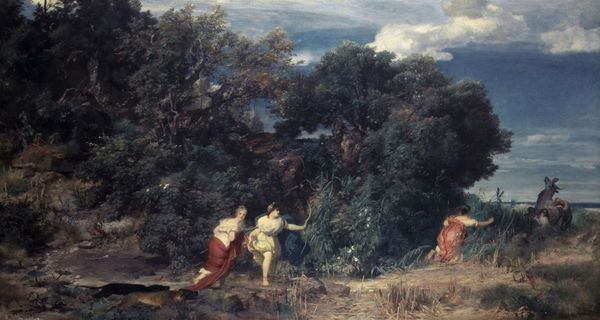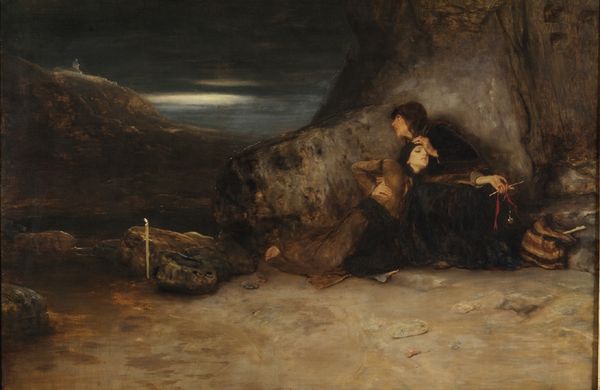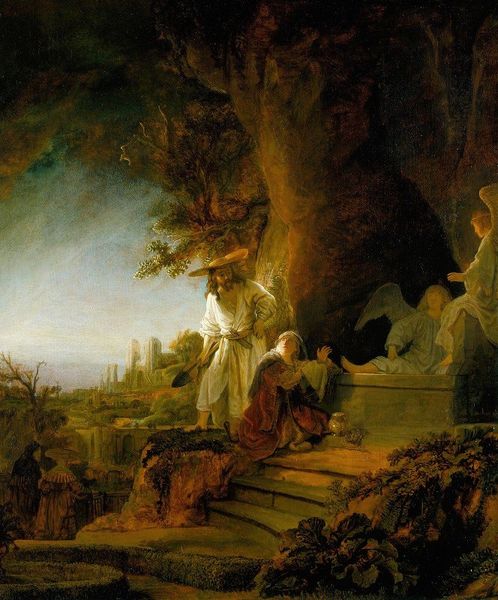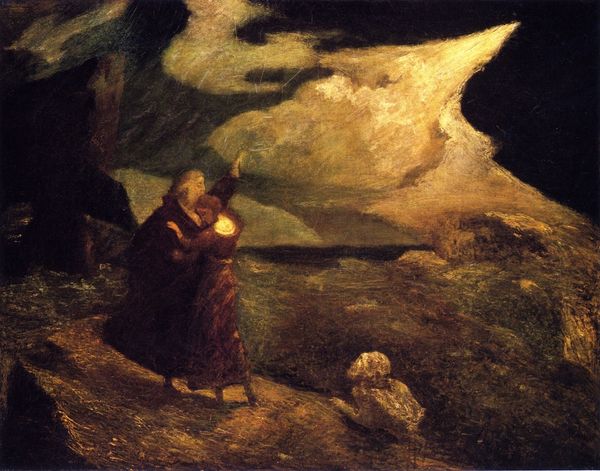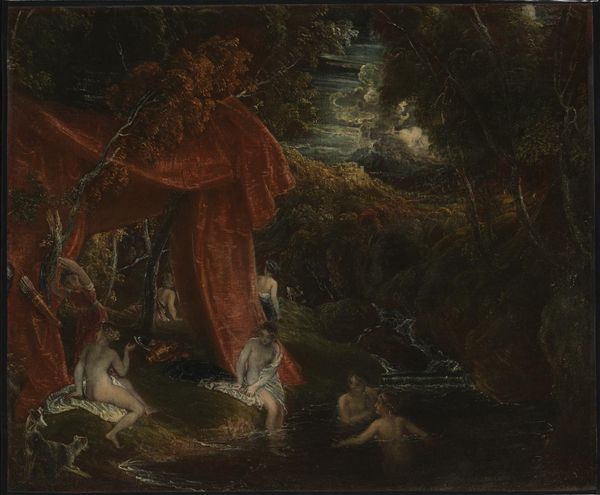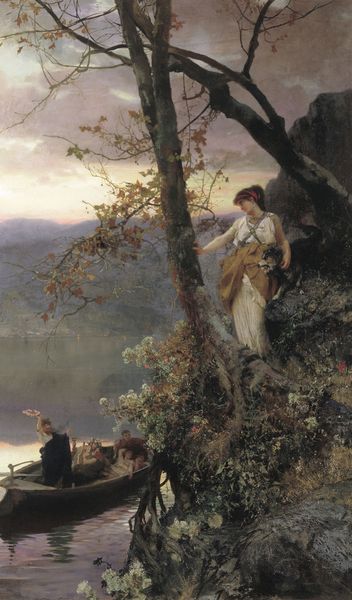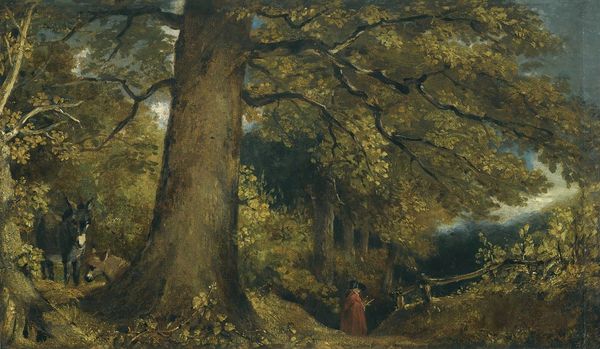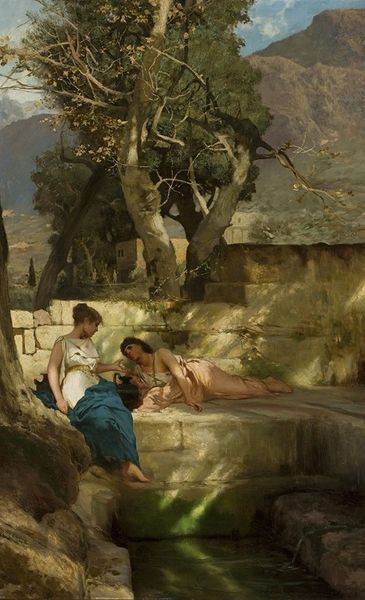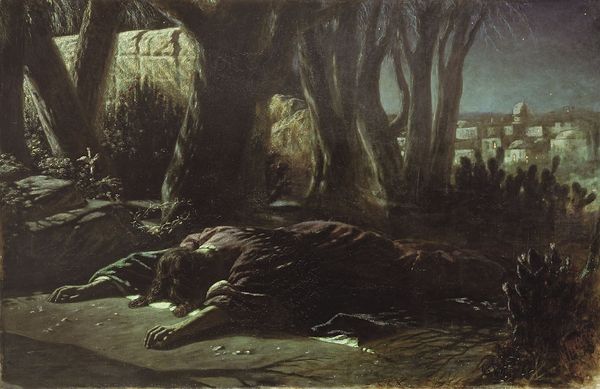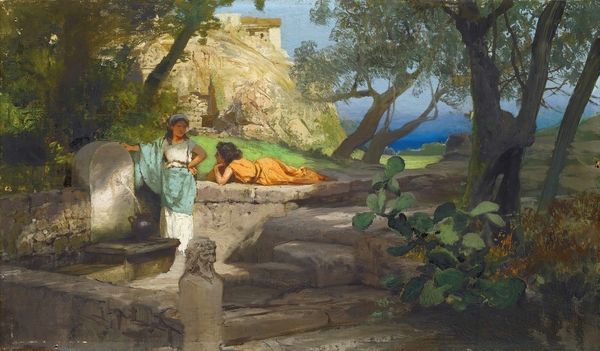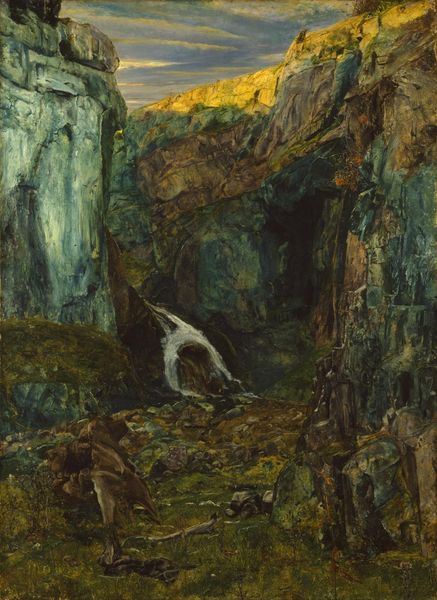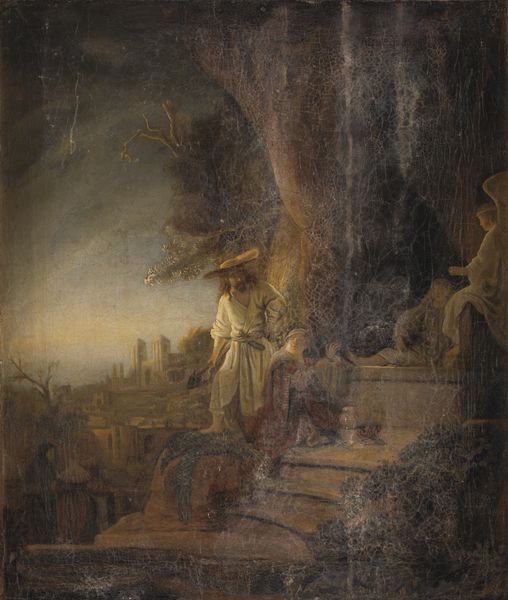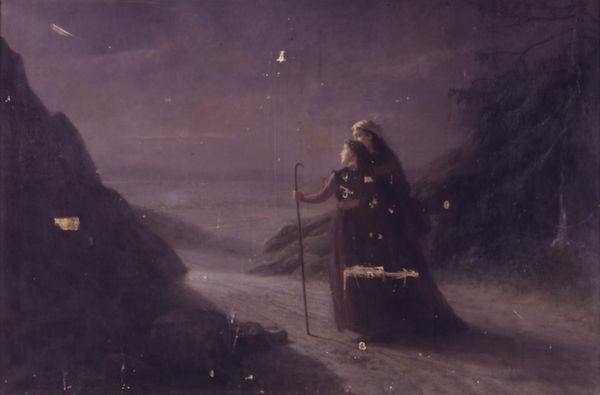
Copyright: Public Domain: Artvee
Curator: We’re looking at "Petrarch at the Spring of Vaucluse," an oil painting created in 1867 by the Swiss artist Arnold Böcklin. Editor: My first thought is how dark the painting is, the somber tonality really amplifies the solitude of the figure. Is it meant to feel so melancholic? Curator: It’s interesting that you hone in on that emotional reading immediately. Observe how Böcklin employs contrasting textures: the smooth surface of the figure's robes juxtaposed against the rugged underpainting of the rocks and vegetation. This dichotomy creates visual tension, framing Petrarch as a distinct subject from his environment. Editor: And what an environment. Vaucluse carries significant symbolic weight, of course. This spring was famously the site of Petrarch’s deep, unrequited love for Laura, the woman who inspired his most famous sonnets. The shadowy grotto hints at the hidden depths of longing and unfulfilled desire. Curator: Absolutely. Moreover, Böcklin uses a tight tonal range to subdue colour, placing emphasis on form and chiaroscuro effects. This technique concentrates the viewer's focus on the interplay between light and shadow. Petrarch’s form is caught between the darkness of the cave and a softer light in the distance. Editor: You’re right. And beyond just the literal place, water imagery is very prevalent here as a symbol. Springs often represented renewal, purity, but here the obscured setting imbues it with uncertainty and perhaps a hint of danger? It almost mirrors Petrarch's own ambivalence, suspended between poetic inspiration and unattainable love. Curator: Consider the gestural brushstrokes defining the landscape. It lends dynamism but also ambiguity. This approach mirrors Böcklin’s broader aesthetic, one which departs from academic realism toward more subjectively constructed visual worlds. Editor: For me, thinking about Petrarch—this place distills a core human experience. It becomes a symbol not just for Petrarch's sorrow but a broader narrative of the pain inherent in artistic inspiration, constantly haunted by what we can never fully grasp. Curator: Precisely. Analyzing the art formally and examining its symbolic construction provide mutually enhancing perspectives, drawing the viewer more deeply into the work’s nuanced dialogue between artistic form and universal themes. Editor: Böcklin's Petrarch leaves one to consider not just what is seen but also what remains just beyond our reach.
Comments
No comments
Be the first to comment and join the conversation on the ultimate creative platform.
